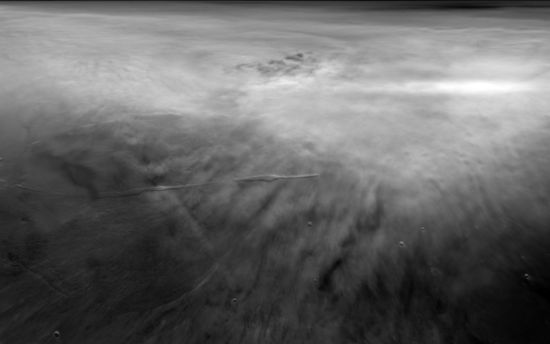Difference between revisions of "MGS Oblique Views"
(Fixed ref section. Added manually (I'm used to Wikipedia).) |
|||
| (2 intermediate revisions by one other user not shown) | |||
| Line 1: | Line 1: | ||
| − | + | ==The View Through The Porthole== | |
[[Image:Oblique_Mars_MGS_R0500192_DJ_Barney.jpg|thumb|550 px|An MGS Oblique view of Olympus Mons using the Malin MOC instrument <ref>[http://www.msss.com/moc_gallery/r03_r09/images/R05/R0500192.html R0500192 browse page at Malin Space Science Systems.]<br /> [worldwind://goto/world=Mars&lat=20.27000&lon=233.71000&alt=1212253 R0500192 location in NASA WorldWind]</ref>.]] | [[Image:Oblique_Mars_MGS_R0500192_DJ_Barney.jpg|thumb|550 px|An MGS Oblique view of Olympus Mons using the Malin MOC instrument <ref>[http://www.msss.com/moc_gallery/r03_r09/images/R05/R0500192.html R0500192 browse page at Malin Space Science Systems.]<br /> [worldwind://goto/world=Mars&lat=20.27000&lon=233.71000&alt=1212253 R0500192 location in NASA WorldWind]</ref>.]] | ||
| Line 5: | Line 5: | ||
[[Mars Global Surveyor]] is famous for taking many "top down" images of Mars that have revolutionised how we perceive Mars. [[Mars Reconnaissance Orbiter]] bases many of it's observations on investigating features first discovered by MGS (of course probes like [[Mars Odyssey]] also figure strongly in their research material). | [[Mars Global Surveyor]] is famous for taking many "top down" images of Mars that have revolutionised how we perceive Mars. [[Mars Reconnaissance Orbiter]] bases many of it's observations on investigating features first discovered by MGS (of course probes like [[Mars Odyssey]] also figure strongly in their research material). | ||
| − | What MGS is less well known for is it's "oblique" views. Taken to monitor [[dust storms]] and [[clouds]], and the "[[limb]]" of Mars, these views are incredible, not often seen, views of the Red Planet that you might see as you look out of the porthole of some spacecraft. | + | What MGS is less well known for is it's "oblique" views. Taken to monitor [[dust storms]] and [[clouds]], and the "[[limb]]" of Mars, these views are incredible, not often seen, views of the Red Planet that you might see as you look out of the porthole of some spacecraft. |
==Dreams of Mars== | ==Dreams of Mars== | ||
| Line 22: | Line 22: | ||
==References== | ==References== | ||
<references/> | <references/> | ||
| + | |||
| + | [[category:Areomorphology]] | ||
Latest revision as of 15:46, 17 December 2018
The View Through The Porthole

Mars Global Surveyor is famous for taking many "top down" images of Mars that have revolutionised how we perceive Mars. Mars Reconnaissance Orbiter bases many of it's observations on investigating features first discovered by MGS (of course probes like Mars Odyssey also figure strongly in their research material).
What MGS is less well known for is it's "oblique" views. Taken to monitor dust storms and clouds, and the "limb" of Mars, these views are incredible, not often seen, views of the Red Planet that you might see as you look out of the porthole of some spacecraft.
Dreams of Mars

Although, of course, they have a Scientific value, I think what makes them more interesting is their psychological value. They are majestic, panoramic, sometimes terrifying in a way. The Red Planet is so often approached from a Scientific standpoint I wonder if we have forgotten that it is literally "the world next door". These images bring forth memories of the novel "Dune" to mind, and boggle the mind with feelings of "anything could be down there".This section reflects the personal position of DJ Barney
Atmosphere

These incredible images show that Mars has a healthy atmosphere, which although very different to the one on Earth, nevertheless has dust storms, haze, and a "terminator" between the Mars atmosphere and space. The nature of the "top down" images do not show this, leading to the erroneous impression of a "dead cold" Mars. Both the ESA Mars Express, and Mars Reconnaissance Orbiter have similar capabilities and a Scientific agenda to study the Mars atmosphere so will will see further "panoramic" oblique views from these orbiters.






